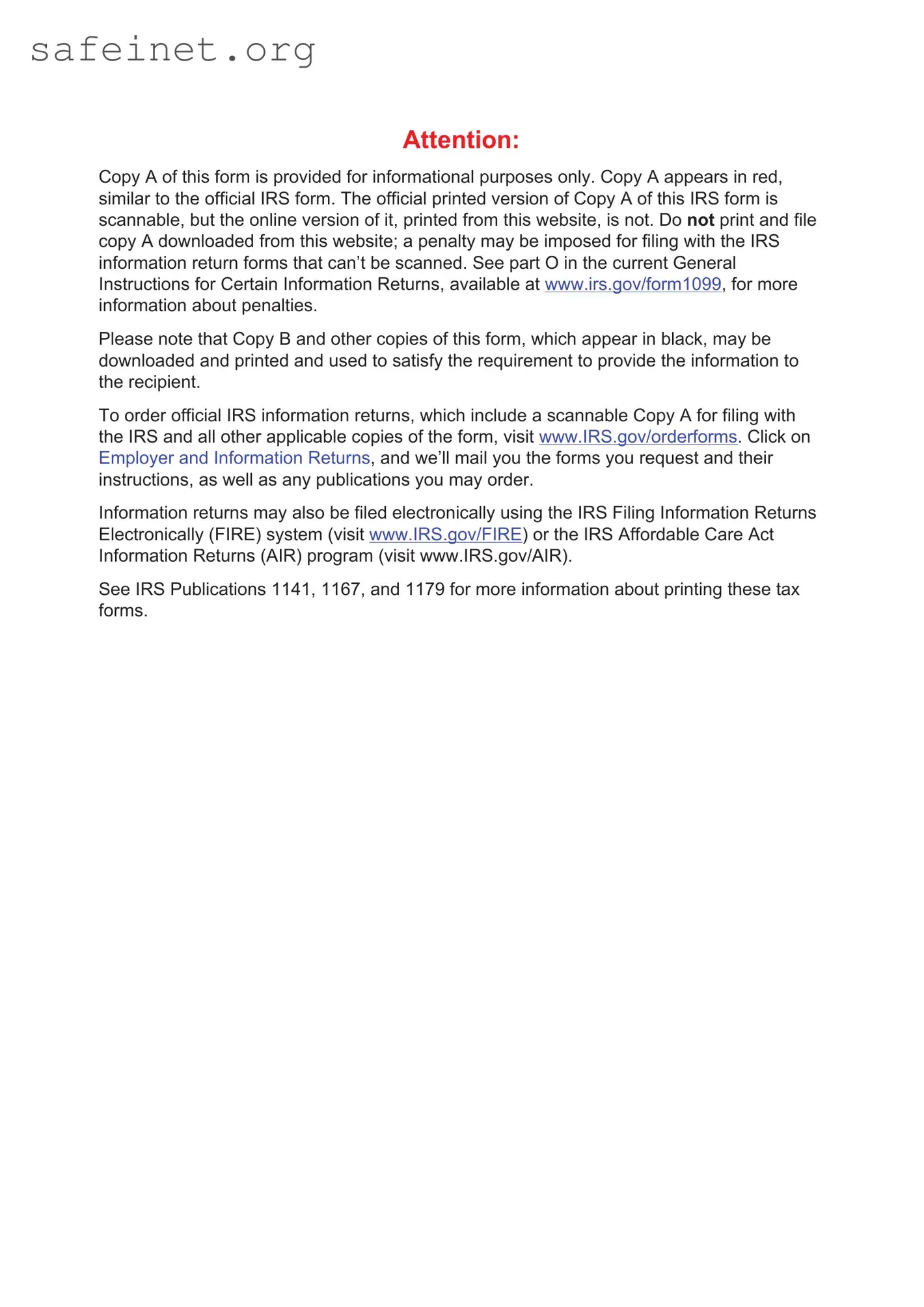The IRS 1099-A form is closely related to the 1099-C, as both documents deal with cancellation of debt. While the 1099-C is issued when a debt is forgiven, the 1099-A is utilized when a lender acquires property through a foreclosure. In either case, these forms inform the taxpayer about taxable income. If the debt is canceled or property is foreclosed, the IRS expects taxpayers to report potentially taxable amounts.
The 1099-INT form reports interest income earned by individuals from various sources, such as bank accounts or investments. Like the 1099-C, this form provides important information for tax reporting purposes. While the 1099-C focuses on canceled debts, the 1099-INT makes sure that individuals know how much interest income they need to report. Both forms serve to keep the IRS informed about income that can affect an individual’s tax obligations.
The 1099-DIV form is used to report dividends and distributions received from investments. It functions in a similar manner to the 1099-C by helping individuals report earnings that contribute to taxable income. The main difference lies in the nature of income reported – while the 1099-C details canceled debt, the 1099-DIV provides insight into passive income from investments. Understanding both is key to accurate tax reporting.
The 1099-R form reports distributions from retirement accounts and pensions. It is similar to the 1099-C in that it reflects income received by the taxpayer. Canceled debt and retirement distributions both have implications for taxable income. While 1099-R focuses on retirement funds, it still contributes to overall income reporting in the same way the 1099-C does when debt is forgiven.
The 1099-S form reports proceeds from the sale of real estate transactions. This form shares a common goal with the 1099-C: both ensure the IRS is aware of money changing hands that might affect taxes. While the 1099-S reflects gains from property sales, the 1099-C deals with canceled debts. In both cases, informed reporting is essential to compliance with tax laws.
The Form W-2 reports wage and salary information for employees. Like the 1099-C, it informs the IRS about earnings that must be taxed. While the W-2 is specifically for earned income through employment, both forms help to illuminate a taxpayer's financial picture for the year. Accurate reporting of wages or canceled debts is crucial for determining tax liability.
The Form 1098 reports mortgage interest paid, and this document can be quite similar to the 1099-C in the context of mortgage loans. While the 1099-C deals with the forgiveness of a loan, the 1098 emphasizes the interest paid on that loan. Both forms contain vital information helping taxpayers report their financial obligations accurately and determining applicable deductions or liabilities.
The 1099-G form reports income received from government agencies. This could include unemployment benefits, state tax refunds, or other government payments. It shares similarities with the 1099-C in that both are issued to report income that can impact a taxpayer's overall financial standing. Reporting these amounts accurately is crucial for ensuring proper compliance with tax regulations.
Finally, the Form 1099-MISC tracks miscellaneous income. Like the 1099-C, it serves to report income received outside regular employment and can include various sources like freelance work or contract payments. Both forms highlight the importance of reporting income accurately, even if it comes from different types of transactions. Understanding these distinctions helps taxpayers navigate their financial responsibilities with clarity.



